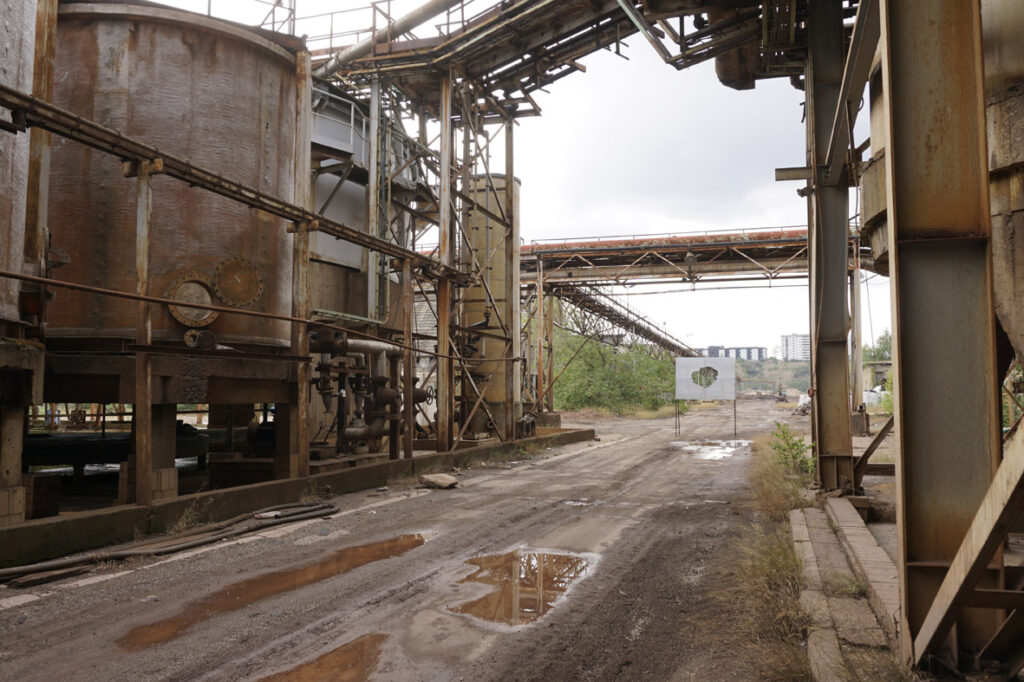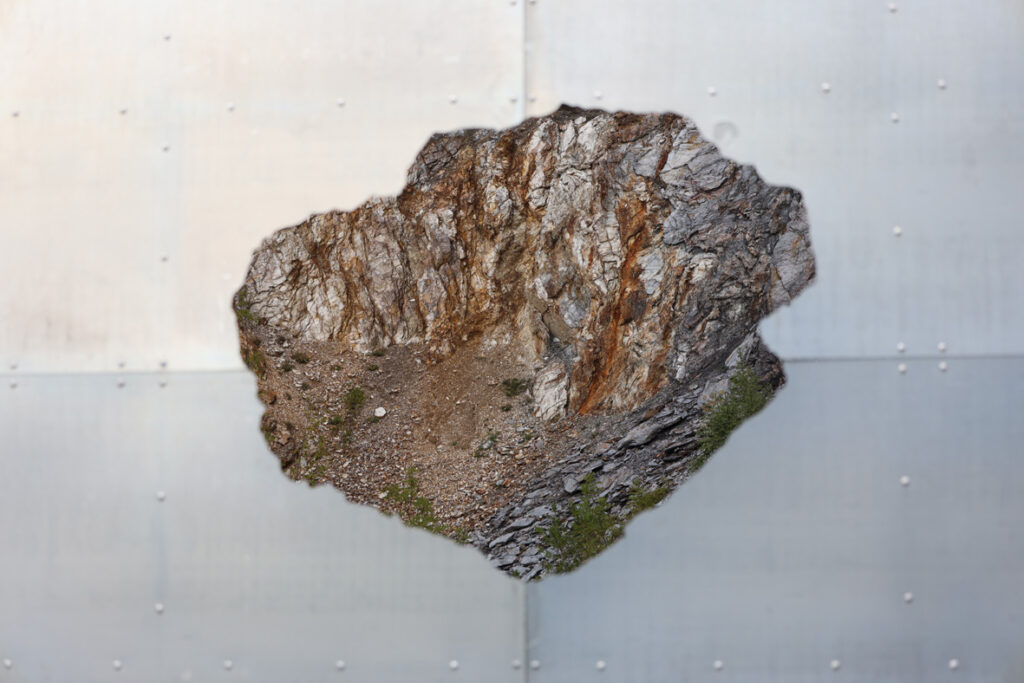2024

HEAVY METALS – The Stones of Mitrovica is a site specific project by Philine Rinnert about raw materials around the city of Mitrovica, Kosovo. It was presented as an installation in the Museum of Archaeology and Ethnology, showing the process of the interventions in dialogue with the residents of Mitrovica.
The Trepça mine in Mitrovica was the largest lead, zinc and silver ore mine in Europe and one of the largest companies in former Yugoslavia. As a result of the last war in 1999 and the ongoing conflicts, the mining complex is now in a desolate state, which has immense potential but has so far been ignored by serious investors for countless reasons.
In collaboration with the local art organisation 7Arte, residents of the town and geologists from the mine, the project explores and highlights the identity of the stones found in Trepça. As a result a sign is built with the cut-out of a stone, a metal ore the group found during the research in the abandoned mine. In a collective intervention it is placed in specific sites, retracing the process of extraction and material transformation from the mine to the former industrial park of Trepça in Mitrovica.
HEAVY METALS – The Stones of Mitrovica is the first project of a long term research series by Philine Rinnert about raw materials. By specific interventions selected sites become a stage for their own stories. The origin of the material itself is emphasised. The artistic research is framed by social, scientific and historical perspectives and happens in a close collaboration with local experts, residents and organisations.
For HEAVY METALS Philine Rinnert collaborates with Swiss artisan Daniel Heer, bringing together the material, the craft and the space. They opened a participatory space for the public to share and exchange stories, stones and resources.
Metal works: Armend Hakaj
Photos: Philine Rinnert, Daniel Heer and Kushtrim Hoti
Typography Heavy Metals: Bram Loss
A collaboration of Philine Rinnert and 7Arte, funded by the European Union and the Goethe-Institut, with the support of the German Embassy and the City Museum Mitrovica.
This work was produced with the financial assistance of the European Union. The views expressed herein can in no way be taken to reflect the official opinion of the European Union












